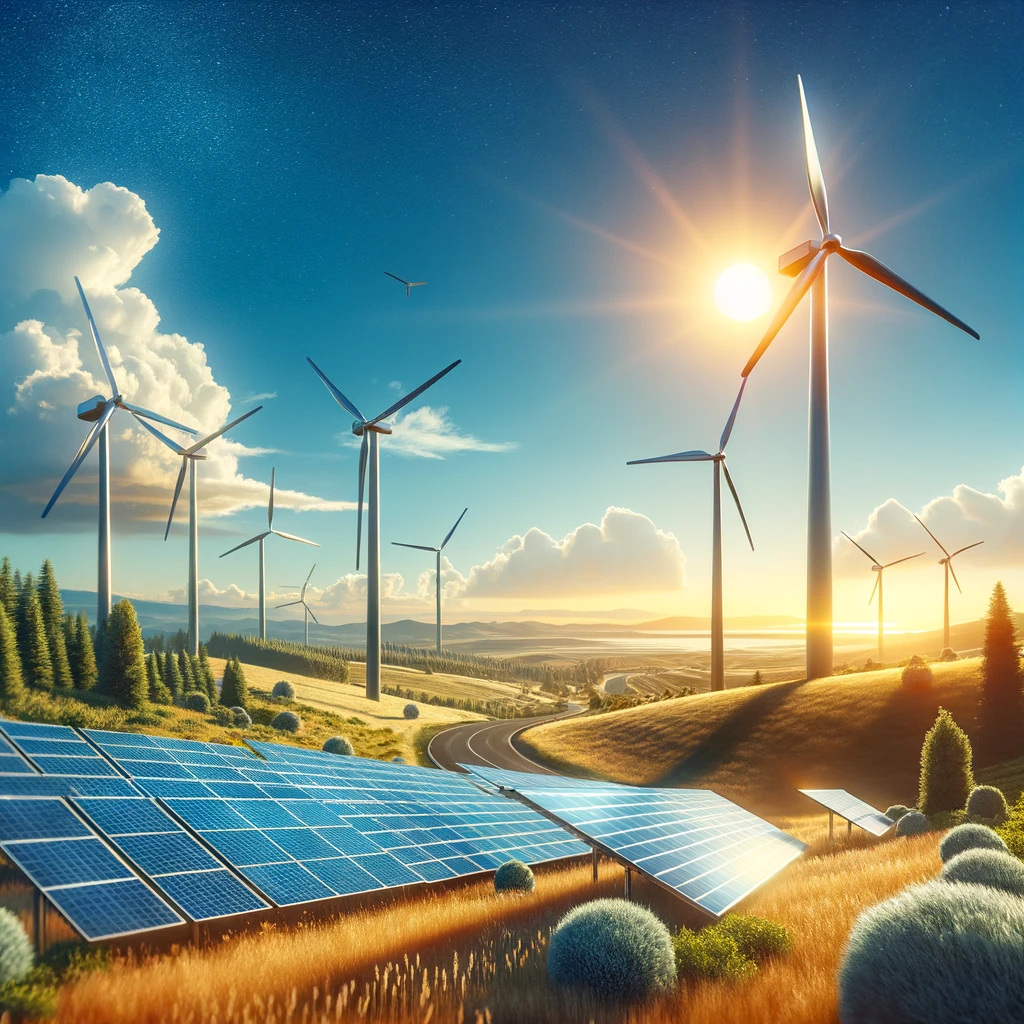Explore a World of Data-driven Energy Solutions
Stay informed and empowered with our latest insights on energy data. Discover trends, innovations, and practical tips to make the most of your energy resources.
Bright Horizons: The Rapid Expansion of Solar and Wind Capacity Worldwide
03/18/2024
Introduction
Solar and wind energy are taking the lead in our quest to make the planet greener. This article dives into how these renewables are growing fast globally, thanks to new tech and supportive policies. We'll look at the latest numbers and trends, and discuss what the future might hold for solar and wind power as key players in our energy shift.
The Surge in Global Capacity: A Snapshot
The last decade has witnessed a remarkable surge in solar and wind energy capacities globally. According to the International Energy Agency (IEA), renewable energy capacity is set to expand by 50% between 2019 and 2024, with solar photovoltaic (PV) and wind energy leading the trend. This expansion is indicative of a broader shift towards renewable energy, driven by both technological advancements and supportive policy frameworks.
Solar Energy Expansion
Technological Advancements
Advancements in solar technology have been crucial in reducing costs and enhancing the efficiency of solar panels. Innovations such as bifacial panels, which capture sunlight from both sides, and perovskite materials, which offer superior light absorption, are pushing the boundaries of efficiency. Furthermore, the integration of solar technology with artificial intelligence and machine learning for better grid management and predictive maintenance is revolutionizing solar installations.
Policy Support
Governments worldwide are implementing policies that encourage the adoption of solar energy. Feed-in tariffs, tax incentives, and subsidies have significantly lowered the barriers to solar adoption. For instance, the European Union’s Green Deal aims to be climate neutral by 2050, which has spurred increased investment in solar technology across the continent.
Global Trends and Data
As of 2023, the global installed solar power capacity exceeds 760 gigawatts (GW), with projections suggesting it could reach over 1,000 GW by 2025. Leading this expansion are countries like China, the United States, and India, which have adopted aggressive renewable energy targets. Notably, China added about 48.2 GW of solar capacity in 2020 alone, despite global disruptions caused by the pandemic.
Wind Energy Expansion
Technological Advancements
Wind energy technology has also seen significant advancements. The development of larger and more efficient turbine designs has enabled not only higher power generation but also operation in previously unsuitable locations. Offshore wind, in particular, has benefited from turbines that can harness wind at higher altitudes where it is stronger and more consistent.
Policy Support
Policies promoting wind energy have included investment tax credits, renewable portfolio standards, and specialized grants for research and development. For example, the United States’ Inflation Reduction Act, enacted in 2022, includes provisions for enhancing the development of both onshore and offshore wind projects, reflecting a strong governmental push towards wind energy.
Global Trends and Data
Wind power capacity globally reached approximately 743 GW by the end of 2022 and is expected to continue growing rapidly. Europe and the USA are leading in the offshore sector, with Europe alone planning to expand its offshore capacity to 300 GW by 2050. Meanwhile, onshore wind continues to dominate the landscape in the USA and China.
The Role of Policy and Technology in Future Expansion
The future of solar and wind energy relies heavily on the symbiotic relationship between policy and technology. Continued technological innovation is essential for overcoming current limitations and reducing costs. Concurrently, robust policy frameworks are needed to facilitate the adoption of these technologies and to integrate them into the national grid systems.
Challenges and Solutions
Despite the promising growth, challenges such as grid integration, energy storage, and transmission infrastructure remain. Solving these issues requires innovative solutions like grid-scale battery storage, enhanced grid management systems, and policies that support grid upgrades and cross-border energy exchange.
Conclusion
The expansion of solar and wind energy capacity worldwide heralds a new era of energy production, one that promises environmental sustainability and economic viability. As technological advancements continue to lower costs and increase efficiency, and as policies increasingly support renewable energy adoption, solar and wind energies stand at the forefront of the global shift to renewable resources. The ongoing commitment to these resources is not just about generating energy, but about reshaping our world for future generations, ensuring a brighter horizon for all.
If you are looking for more information about energy companies, their assets, and energy deals, please, contact our sales office mapping@hartenergy.com, Tel. 619-349-4970 or SCHEDULE A DEMO to learn how Rextag can help you leverage energy data for your business.
From Silicon to Wind: Technological Innovations Fueling Renewable Growth
The efficiency of silicon-based solar cells, which constitute over 90% of the global market, has seen a remarkable improvement.
Green Policies, Brighter Future: How Government Support Is Shaping Renewable Energy
![$data['article']['post_image_alt']](https://images2.rextag.com/public/blog/a21-green-policies-brighter-future-how-government-support-is-shaping-renewable-energy.jpg)
In today's rapidly evolving energy landscape, renewable energy stands at the forefront of creating a sustainable future.
![$data['article']['post_image_alt']](https://images2.rextag.com/public/blog/a35-advances-in-hydroelectric-power-storage-systems.jpg)
Explore recent advances in hydroelectric power storage systems, including variable speed turbines, underground storage, and floating solar integration, with latest data.
![$data['article']['post_image_alt']](https://images2.rextag.com/public/blog/a34-environmental-remediation-techniques-for-oil-spills.jpg)
Explore advanced environmental remediation techniques for oil spills, including mechanical, chemical, biological methods, and recent innovations with current data and case studies.
![$data['article']['post_image_alt']](https://images2.rextag.com/public/blog/a33-advancements-in-natural-gas-pipeline-leak-detection-technologies.jpg)
Discover advancements in natural gas pipeline leak detection technologies, enhancing safety, reducing emissions, and improving economic efficiency with recent data.
